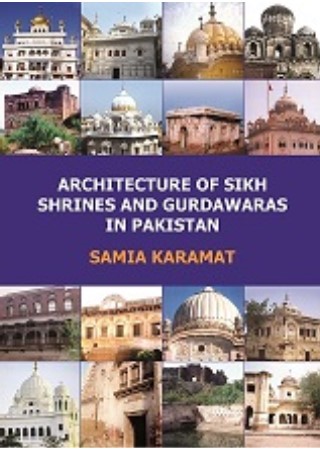Architecture Of Sikh Shrines And Gurdawaras In Pakistan
₨0.00
Publisher? ??New Line
ISBN? ? ? ? ? ? ? 9789698899271
Pages? ? ? ? ? ??188
Out of stock
In Praise, Some Reviews This comprehensive study of some of the forgotten sites of the Sikh legacy across Pakistan provides a glimpse of the erstwhile architectural expertise. It evokes a strong sense of a longing for embrace. Amardeep Singh, author of LOST HERITAGE The Sikh Legacy in Pakistan and THE QUEST CONTINUES, LOST HERITAGE The Sikh Legacy in Pakistan Architect SamiaKaramat has completed a valuable study of several well-known and not so well-known Sikh religious and community buildings sited in Pakistan Punjab. That several of the buildings she so painstakingly describes are now close to collapse underscores the value of her efforts, both for scholars and enthusiasts today, and for those in the future whose actions will determine whether these important Sikh sites will be cared for properly, as they must. Samia s book is genuinely a work ofseva,carried out with skill and generosity of vision. Professor William Glover, Department of History,University of Michigan. USA The book brings to focus information that is critical for scholars interested in the study of sacred Sikh geography and history. A welcome addition to the budding field of Sikh architecture and heritage, one cannot help but be grateful to the author for her hard andpainstakinglabor. Gurinder Singh Mann Global Institute for Sikh Studies, New York USA. The Punjab is the vast swath of land between Delhi and Peshawar on the one axis and between Kashmir and Sind on the other with no fixed boundaries. It is a land replete with tales of romance, celebrations of nature in its fecundity and challenges, heroes and battles, and above all a people rugged and resilient. It went through very turbulent times as the Mughal Empire crumbled after Emperor Aurangzeb (d 1707) until Ranjit Singh, (1799-1839) the Maharaja, gave parts of it some semblance of stability and prosperity. He ruled the Punjab for about 40 years and many consider that as its golden period.SamiaKaramat has explored the history, culture and architecture of the Punjab during this period in a comprehensive and a holistic manner. She connects the evolution of the Sikh Faith with the contemporaneous developments in the political and social fabric and then weaves the developments in architecture into that mosaic. Architecture like all arts grows out of a particular culture and varies accordingly. The Gurdawara symbolized freedom from oppression, equality among the living, and encouraged people to focus around that symbol of human wisdom, the Guru Garanth Sahib, holiness personified. The form was dictated by the beliefs, tenets of the faith and a set of spaces were developed which in use, and aesthetics of space are unique. One such example is the hall provided for the holding of the Langar. The Sikh Langar was in sharp contrast to any in Hindu or Muslim faith and became an integral part of the architectural spaces of the Gurdawara. Through the act of eating together without any differentiation based on religion, cast, creed or race the Sikh Faith ordained the breaking of all taboos that divided humans. It is a unique example in the South Asian context, which is and continues to be riddled with divisions based on caste,color of skin etc. In its plan as well as the decoration, the Gurdawara stands unique and tall as a contribution to the human heritage. Samia Karamat has made a significant contribution to the understanding of the period of turbulence and the ultimate stability brought about by the sagacious Maharaja Ranjit Singh. The author has brought to our notice some of the lesser known Gurdawaras that were sadly neglected in the post Partition period. This is a contribution that will be lauded by all those who believe in tolerance and a harmonious living among all faiths and creeds. Pervaiz Vandal Pro Vice Chancellor at Institute for Art and Culture,Lahore. The origin and development of Sikh religious architecture is a neglected subject notwithstanding prominent Gurdwaras scattered all over the area. SamiaKaramat has done well to take up this work in right earnest. In this monograph, she has in brief traced the religious and political history of Sikh religion and identified the basic religious teachings and precepts that influenced the eventual plans and forms of Sikh shrines. The detailed sketches, actual plans and architectural contours of the Golden Temple, Amritsar and some Gurdwaras of Pakistan present a thought provoking study of how the Sikh Mut, the youngest religion, originating from the soil of the Punjab, developed a distinct architectural pattern as compared to Muslim Mosques and Hindu Temples. Syed Afzal Haidar Former Acting Chief Justice of Federal Shariat Court, Pakistan Senior Advocate Supreme Court of Pakistan.Member, Law and Justice Commission of Pakistan
Customer Reviews
There are no reviews yet.










Be the first to review “Architecture Of Sikh Shrines And Gurdawaras In Pakistan”